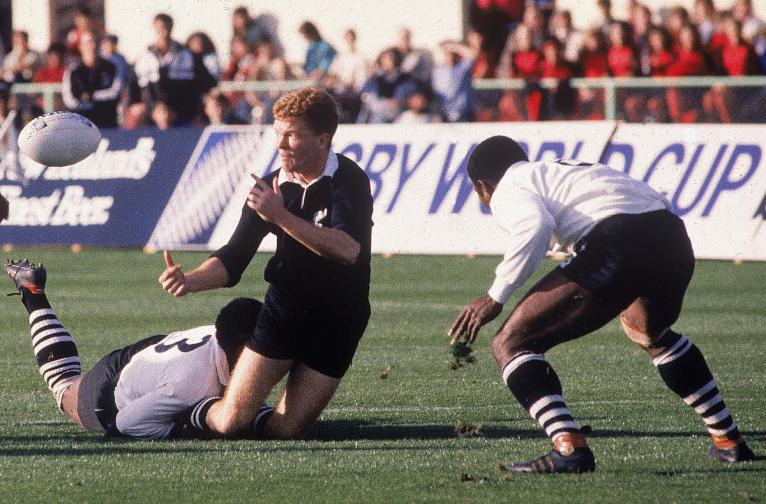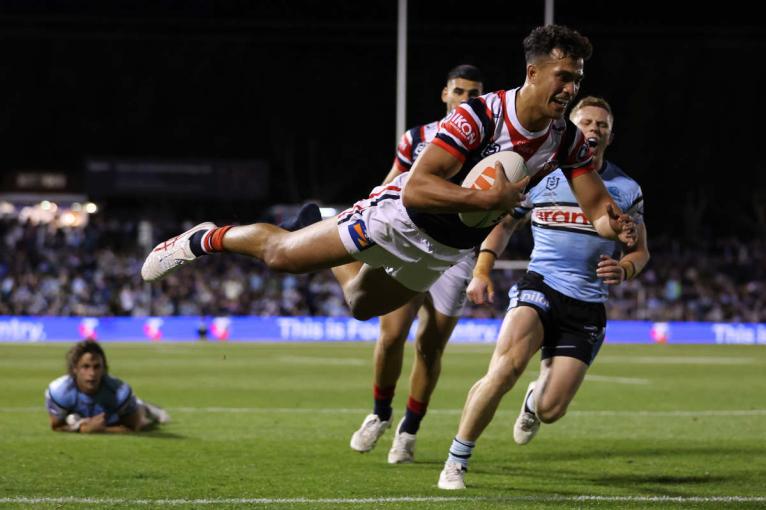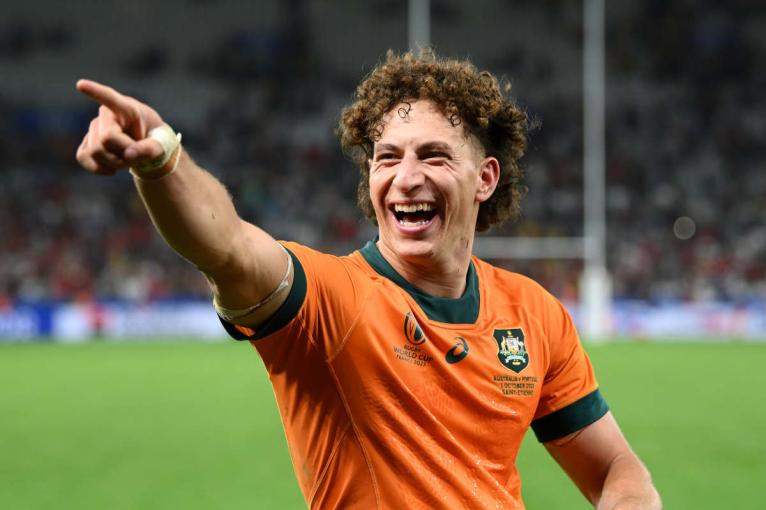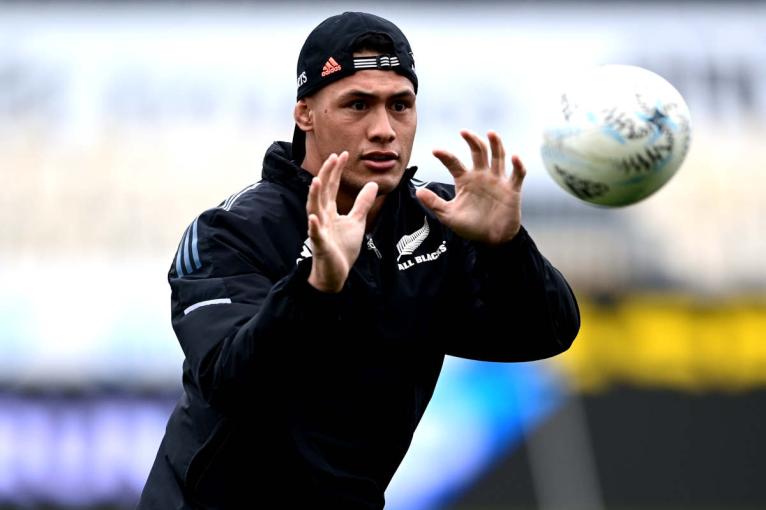Back in the early 1990s, rugby’s various leaders in New Zealand had to work together to win a war against rugby league.
The professional code had money and a healthy appetite for signing All Blacks and throughout the late 1980s and early 1990s, New Zealand saw many high-profile rugby players defect to the enemy code.
The likes of Matthew Ridge, Craig Innes, John Gallagher, John Timu and Shane Howarth all took the money they were offered to play league, and the legendary Zinzan Brooke just about signed with the Manly Sea Eagles in 1989 before he was remotely close to becoming a starting All Black.
The game in New Zealand was under siege, which is why administrators pushed hard to persuade the rest of the world to sanction a move to professionalism and enable them to better fight off the league predators who were stealing their talent.

When they got what they wanted in 1995, rugby effectively won the war. The Southern Hemisphere alliance of New Zealand, Australia and South Africa shared US$555m of broadcast income and league no longer had the means to lure players to the NRL.
And for the last 30 years, rugby in New Zealand has barely noticed its old foe. The only direction players have flowed since 1995 is from league to union – with big-name converts such as Sonny Bill Williams, Brad Thorn and Ngani Laumape all leaving the NRL to become All Blacks.
Rugby in New Zealand is in danger of having to once again slug it out in the trenches with a rival code that is building irresistible momentum.
But here we are 30 years on, and hostilities are starting to erupt again. Having thought it had won the war for talent, audience and broadcast dollars, and effectively killed off any chance of league ever being any kind of threat, rugby in New Zealand is in danger of having to once again slug it out in the trenches with a rival code that is building irresistible momentum.
The last year or so has seen the NRL flex its muscles in all sorts of different ways. Maybe the biggest flex came shortly after Rugby Australia pulled off a major coup in signing 19-year-old NRL star Joseph Suaali’i on a $5m three-year deal.
RA not only took a rare talent from the NRL, but it promised there would be more league stars targeted for defection.

This aggressive stance by RA was designed to rattle the NRL and warn them that rugby was ready to raid their ranks, but it simply drew out a calm and measured response. NRL chair Peter V’landys said it would look to allow salary cap exemptions to clubs who targeted players from other codes and other countries.
“We have been looking at bringing in salary cap exemptions for players from other countries for some time,” V’landys told the Sydney Morning Herald.
“It was about bringing in players from America and other nations. It would also apply to players from other sports. And, yes, other sports include rugby.
“If a Wallaby or an All Black wanted to come over, we’d look at cap exemptions for sure. We have been looking at this for quite a while, and it’s a good time to revisit this. It’s something I’d like to see come in and come in now.”
Now that the NRL clubs will have the capacity to throw $1million-a-year pay packets at All Blacks – salaries commensurate with what they earn playing rugby in New Zealand – the fear is that some will be tempted.
Shortly after V’landys aired his thinking, it was announced the Sydney Roosters had signed Waratahs and Wallabies wing Mark Nawaqanitawase to replace Suaali’i in 2025 and that a handful of NRL clubs are targeting Reds and Wallabies utility back Jordan Petaia.
Providing clubs with the ability to go outside the salary cap to sign talent from other codes is a genuine worry for rugby bosses in New Zealand. While the country has not suffered any major defections to league since the game went professional, a few big names have been close to leaving.
Ma’a Nonu went to the Balmain Tigers in 2008, looked around the club and said he wanted to join. His agent persuaded him to take another week to think about it, in which time he changed his mind as the All Blacks reassured Nonu they still wanted him despite dropping him for the 2007 World Cup.
And then in 2021, Hurricanes captain TJ Perenara was weighing up whether to return to New Zealand after a stint in Japan or play in the NRL.

He chose the Hurricanes, but only just, revealing a few months later: “I got to the point where I was getting training drills and conditioning plans to prepare myself to play league, and implementing that.
“Not stuff that would distract or take me away from playing rugby, but stuff that I could easily do at the back-end of a training session, that would really help me condition into going to league.”
Now that the NRL clubs will have the capacity to throw $1million-a-year pay packets at All Blacks – salaries commensurate with what they earn playing rugby in New Zealand – the fear is that some will be tempted.
Caleb Clarke, the rising star of the Blues, spent his summer training with the Rabbitohs, while in April last year, Roger Tuivasa-Scheck, who had been poached by the Blues from the NRL in 2022 and won three test caps, announced he would be returning to league in 2024.
While the NRL is swimming in money, NZR lost $47m last year and Super Rugby is beset with financial problems, none more drastic than those being experienced by the Melbourne Rebels, who are probably going to fold after this season.
What’s compounding these fears that league may get a major foothold in New Zealand is the seemingly growing popularity and power of the NRL.
Last year, New Zealand’s sole professional league club in the NRL, the Warriors, not only made it to the semi-finals for the first time in a decade, but they won a huge audience in doing so.
Throughout August and September, New Zealand’s media were promoting the Warriors as hard as they were the All Blacks’ World Cup campaign.
All this media hype helped the NRL generate a record $750m of revenue last year and post a profit of $58m, which is why it is talking openly about expanding to become a 20-team competition by 2028 – and has said that a second team in New Zealand, in the South Island, is a genuine possibility.

The fledgling franchise has persuaded former NZR, NRL and Welsh Rugby Union boss David Moffett to lead the proposed new club, which will be based in Christchurch.
Former Rugby Australia boss Andy Marinos will be working with Moffett, with the new club suggesting it will run as a collective, with fans able to buy shares and have genuine ability to steer the direction of the team.
While the NRL is swimming in money, NZR lost $47m last year and Super Rugby is beset with financial problems, none more drastic than those being experienced by the Melbourne Rebels, who are probably going to fold after this season.
In fact, the Rebels are a great case study to show the different abilities of league and rugby to conquer new markets.
The NRL decided in 1997 that it wanted a team in Melbourne – a sports-mad city, but one that was obsessed with Australian Rules Football. There was no established playing base of league or union in the state of Victoria, but the NRL funded the launch of the Melbourne Storm and have produced one of the competition’s most successful clubs.
Not only do the Storm have an average crowd of around 18,000, but they have also won four titles and played in 10 Grand Finals.
Super Rugby can barely make an impression in a city that has a rugby team in the competition, while in the US, where there is barely any knowledge of league, the NRL persuaded 40,000-plus people to take a look.
Rugby wanted a slice of that same action, so launched the Rebels in 2011. But they have accumulated a reported $20m of debt and failed to win a sustainable following or indeed many games.
Staying with Melbourne, it once again played host for the super round of Super Rugby Pacific in the first weekend of March. All 12 teams played at the AAMI Stadium across Friday, Saturday and Sunday, with crowds peaking at 10,000 on the Saturday.
Meanwhile, the NRL showcased itself in Las Vegas, where its double header at the Allegiant Stadium drew 41,000 people.
And there’s the worry for New Zealand. Super Rugby can barely make an impression in a city that has a rugby team in the competition, while in the US, where there is barely any knowledge of league, the NRL persuaded 40,000-plus people to take a look.
It seems like the war that New Zealand rugby bosses thought they had won will need to be fought all over again, and perhaps those on the frontline should take heed of the views of former All Blacks coach Sir Steve Hansen.
“I look at NRL and the guy in charge there, Peter V’landys,” he said. “His formula’s very simple. It’s all about what do the fans want, what do the participants want and give it to them.”



Comments
Join free and tell us what you really think!
Sign up for free